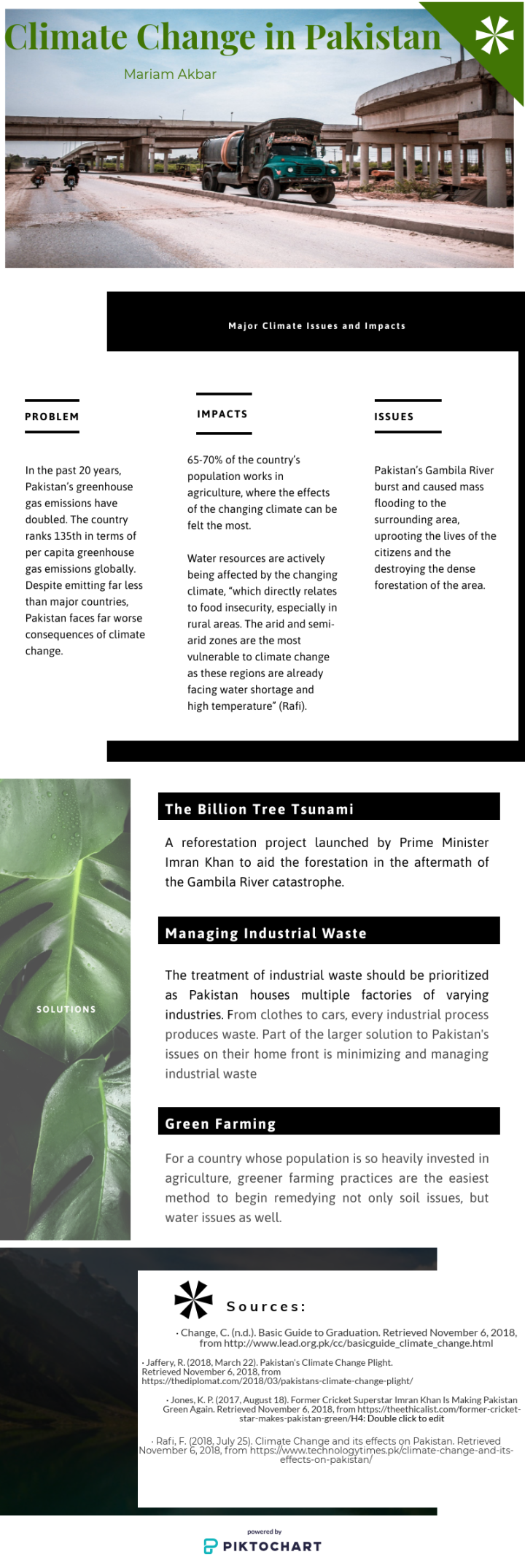In the upcoming weeks, our class is going to be hosting our own mini-mock UN. I have been assigned the role of the developing country of Pakistan, where my own roots are. Below is my preparation for our discussion and an infographic I made summarizing what I learned about the impacts of Climate Change in Pakistan.

1.Climate impacts:
- In the past 20 years, Pakistan’s greenhouse gas emissions have doubled. The country ranks 135th in terms of per capita greenhouse gas emissions globally. Despite emitting far less than major countries, Pakistan faces far worse consequences of climate change.
- 65-70% of the country’s population works in agriculture, where the effects of the changing climate can be felt the most. The periods at which crops can be sowed are changing, thus changing irrigation requirements. This harms the soil and decreases future agricultural productivity and has adverse effects on the farmers and the population.
- Part of this problem is the availability of fresh water. Water resources are actively being affected by the changing climate, “which directly relates to food insecurity, especially in rural areas. The arid and semi-arid zones are the most vulnerable to climate change as these regions are already facing water shortage and high temperature” (Rafi).
- Major climate-related issues at present and in the future:
- Pakistan’s Gambila River burst and caused mass flooding to the surrounding area, uprooting the lives of the citizens and destroying the dense forestation of the area.
- Position on the issues and possible solutions under consideration:
- The Billion Tree Tsunami reforestation project was launched by Prime Minister Imran Khan to aid the forestation in the aftermath of the Gambila River catastrophe.
- The treatment of industrial waste should be prioritized as Pakistan houses multiple factories of varying industries.
- For such an agriculturally heavy population, greener farming policies should be implemented.
- Sources in APA style
- Change, C. (n.d.). Basic Guide to Graduation. Retrieved November 6, 2018, from http://www.lead.org.pk/cc/basicguide_climate_change.html
- Jaffery, R. (2018, March 22). Pakistan’s Climate Change Plight. Retrieved November 6, 2018, from https://thediplomat.com/2018/03/pakistans-climate-change-plight/
- Jones, K. P. (2017, August 18). Former Cricket Superstar Imran Khan Is Making Pakistan Green Again. Retrieved November 6, 2018, from https://theethicalist.com/former-cricket-star-makes-pakistan-green/
- Rafi, F. (2018, July 25). Climate Change and its effects on Pakistan. Retrieved November 6, 2018, from https://www.technologytimes.pk/climate-change-and-its-effects-on-pakistan/